I have already posted a few articles about my Achilles tendon rupture on my blog in Chinese. This article is to run through the whole story briefly in English so that I can let my friends here in UK understand what I have been through.
The whole thing started in the evening Monday 18 August 2008.
I made some good friends in south London who play Badminton regularly, about 2 or 3 times a week. I joined them in order to get myself healthier. On that night, we booked the court from 8pm to 10pm, and it was about 9:30pm. When it happened, I was trying to run and bend forward to catch a short ball near the net. My right leg was in the back and suddenly I felt like being hit by some rod on above my ankle. The leg became so weak that I fell down immediately.
I checked the people behind me, but they did not see anything. I observed my leg, and found that the muscle was all loose and there was an obvious gap in the back of my lower leg, right above the ankle. I suddenly started to worried about it was something wrong with my Achilles tendon although people in the sports centre assured me it was just that the muscle went through some shock and I just needed a good rest. It was not painful, and I could still bend my foot in all angles.
I sat there for a few minute and then a close friend drove me home.
The next day, Tuesday 19 August, because I was still very worried about the injury, I went to a hospital near my place, Charing Cross Hospital in Hammersmith. I went directly to the A&E department, and a nurse checked on my leg and confirmed that it was indeed the Achilles tendon rupture. He let me knee down on the coach, squeesed my muscle in the back of the lower legs. and then checked the response of my foot. The left foot was lifted while the right foot was only a little bit lifted. It was then obvious that the tendon was not functioning well. It could be a partial Achilles tendon rupture.
Since my leg was still swelling, the nurse used a plaster to fixed the position of my right foot that it was bended forward and the distance of my ankle and the tendon was shortened so as to let the tendon grows back naturally. I told the nurse that I had a trip planned on the following weekend, so he suggested me to come back to the hospital and re-do my plaster in the plaster room before flying off. He also tried to arrange my appointment with the doctor, but could only be scheduled on 1 September because all the time slots were taken.
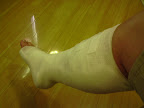
The nurse gave me a document from the internet regarding Achilles tendon rupture and its treatment. You can find the document
here. There are at least 2 ways to treat this injury - conventional treatment or surgery. Either way, I will need to be in the plaster for 6 - 8 weeks.
Knowing that I had this injury, I quickly informed my project team lead and my career councilor. They kindly asked me to follow the doctor's instructions and rest as much as needed. My roll off date from the project was quickly decided and I then started my longest sick leave ever.
The following Friday, 22 August. I went back to the hospital, with a reference letter from the nurse in the A&E department. I met the plasterer of the hospital, and he did a similar test on my tendon before replacing the plaster. This plasterer was more senior to the one in A&E and did a great job in making the plaster. However, he gave me a different conclusion on my tendon - it was looking more like a complete Achilles tendon rupture now.
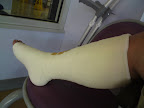
I think I was very lucky because I went to the hospital the next day the accident occured so the hospital could do proper handling on my case. Knowing the situation had changed from partial rupture to complete rupture, the plasterer asked the reception to insert an emergent appointment with the doctorthe truma and fracture clinic on the coming Wednesday, 27 August.
Of course, the trip to North Ireland was cancelled.
Before I knew it was a complete rupture, I always believed that I would take the conventional treatment in which the leg will be kept in plaster and let the tendon grow back naturally. But now I started to seriously consider surgery treatment - was it necessary? should I do it in UK or in Taiwan? what would be the impact on my work after the surgery?
After talking to many friends, including my flatmate who is doing his PhD study in medical engineering in Imperial College, and an old friend who was a doctor from Cambridge. I concluded that the repair surgery of Achilles tendon was not a very complicated one and it was almost the most basic operation in orthpedic. The biggest risk in surgery is the potential for infection on the wound - there is less blood circulation in that area. I thought it should be a manageable risk.
Wednesday 27 August, I went to the hospital to see the doctor. After a short wait in the treatment room, the doctor came and spoke to me. He told me my situation was a partial rupture and the conventional treatment would be the better option for my treatment. I suddenly realised that he was speaking based on the inspection in A&E. I told him what the senior plasterer discovered when I went changing my plaster. He realised what I was talking about and started to unwrap my plaster and checked on my leg.
He was soon convinced that it was a complete rupture. Since it was a complete rupture, the surgery was inevitable. He asked me to sign on an agreement form for operation and then arranged the ultrasound inspection. It was a few hours later, after a series of waiting and checking, it was confirmed by the ultrasound that my tendon was indeed completely ruptured.
By then it was another young doctor who did a series of pre-operation questions for me. He then asked me to come next day, Thursday 28 August, for the operation. He said he would like to get me into the hospital that day if there was a bed available for me.
'Tomorrow? Is it possible? I never saw UK people working in such efficiency!' I was amased and my flatmates were all amased.
So I went the next day but it was a diappointing day in the end. As instructed, I stopped eating/drinking by midnight and arrived at the ward room before 7:30AM. But I did not get the surgery or even the confirmation for the surgery until 5PM when the young doctor and the registrar came and said sorry to me - since I was put in the emergent theatre list, and because there were other more emergent cases so I could not have the surgery on Thursday. I had to stay in the hospital over night and wait for the chance for the operation on the next day.
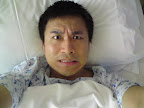

So I did not eat anything and drink anything until 5pm that day and I would need to be on fast again after mid night. Thankfully many friends came to visit me in the evening, bringing my laptops along so that I could pass the following few days without too much boredon.

Afternoon Friday 29 August, I finally get the chance for the operation. I had been greeted by anesthetists and nurses, I also see the doctor who would do the surgery for me - he was the first doctor who saw me on Wednesday. I was given a full anesthetisation and the surgery was done in a couple of hours. When I woke up and saw my doctor, he told me "the surgery was technically successful".
Cool.
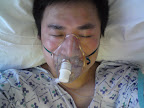
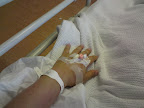
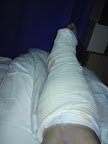
I was kept in the hospital for observation until Monday 1 September. I think it was the post effect of anethetisation, I was not really feeling good until Sunday. I was given a new plaster, a full plaster with fibreglass outfit, which looked like a ski kit or something similar. When I arrived home, it was already in the evening.
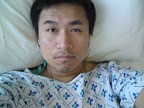
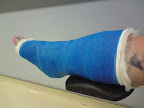
I was given a 2-week sick leave by the doctor when I left the hospital on Monday 1 September.
Today, Thursday 11 Septmember, I went to see my GP. After understanding my situation, my GP gave me another 4 week sick leave so that I can fully recover and he suggested me go back to him toward the end of the 4 week period to review my progress.
Usually the recovery will take 6 - 8 weeks. If everything goes well, by the time I can get rid of the plaster, it would be late October, maybe toward the end of October. I will still need to go through a series of practice after that, since I need to regain the strength on my leg. There is still a long way ahead before I can go back to the sports ground. What a long wait!
Anyway, I will make it.
Update 2 Oct 2008.
I went back to the hospital on 17 Sept for the appointment with the doctor. After checking the wound, the doctor confirmed that it was healing well. That day I had the stiches on the wound removed, and also the plaster room gave me a new plaster - it was purple and looked pretty nice.
On 2 Oct, I re-visited the hospital to replace a new plaster and bending the foot angle. This time it is a pink.
Update 15 Oct 2008.
I revisited my GP last week on Wednesday 8 Oct. The doctor extended my sick leave for another month. I will be back in office in early November.
15 Oct morning, I revisited the hospital to replace my last plaster. My foot angle was fixed at 90 degree so I am allowed to stand and walk on both feet now. It hurts a lot to stand and walk as I believe the foot has been free from any pressure for too long and it needs to get used to my body weight again.
My new plaster is a green one. I originally wanted an Apple green, but unfortunately it is the only green they have. The plasterer has done a good job again to make it very nice and beautiful. I was also given a shoe to put on the plaster when I need to walk outdoors.
Please see the new photos at
Update 29 Oct 2008.
I revisited the hospital today and finally got my plaster removed. Hooray!!!!
The leg is weak and the tendons in the back and front of my foot are all very tight. I have taken some photos today. It is interesting to see how my skin gets dry and easy to peal on the leg.
I also talked to the physiotherapy today. I have been given 2 practices to stretch my foot. The next appointment will be in 2 week time.
Full Chinese Version:我如何弄斷了我的阿基里斯腱 (1) - 意外的發生 [How I ruptured my Achilles Tendon (1) - The Accident]












